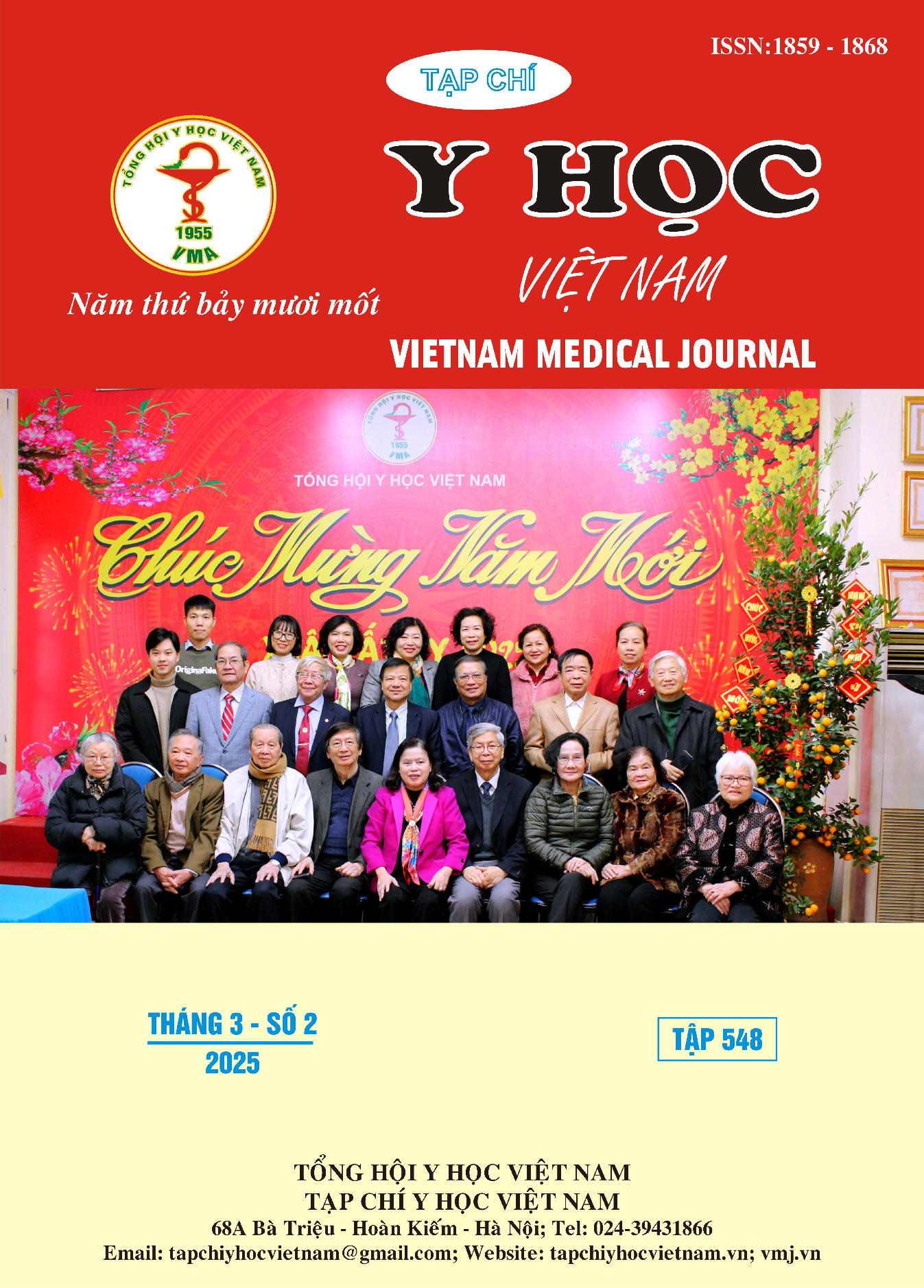ĐÁNH GIÁ LÂM SÀNG THỰC HÀNH CHO CON BÚ SAU MỔ LẤY THAI TẠI BỆNH VIỆN ĐẠI HỌC Y DƯỢC TP.HCM
Nội dung chính của bài viết
Tóm tắt
Đặt vấn đề: Khoảng thời gian sau sinh 1 tháng thời điểm quan trọng mà hầu hết các bà mẹ đưa con đi tái khám định kỳ. Việc xác định được tỉ lệ bà mẹ cho con bú hoàn toàn sau mổ lấy thai sau sinh 1 tháng sẽ giúp các nhà thực hành lâm sàng, các nhà quản lý đưa ra các chính sách can thiệp và tư vấn kịp thời cho các bà mẹ. Mục tiêu nghiên cứu: Xác định tỷ lệ bà mẹ cho con bú sữa mẹ hoàn toàn sau mổ lấy thai sau sinh 1 tháng tại bệnh viện (BV) Đại học Y Dược TP.HCM. Phương pháp nghiên cứu: Nghiên cứu cắt ngang trên những bà mẹ sau sinh mổ 1 tháng tại BV Đại học Y Dược TP.HCM, từ tháng 11/2024 đến tháng 01/2025. Kết quả: Tỷ lệ nuôi con bằng sữa mẹ hoàn toàn ở những phụ nữ sau sinh mổ 1 tháng tại BV Đại học Y dược TP.HCM là 40,4% (KTC 95%: 35,5 - 45,3). Các yếu tố liên quan có ý nghĩa thống kê đến thực hành cho con bú mẹ ở nhóm đối tượng này là: có tham gia lớp học tiền sản mà có bao gồm về các vấn đề cho con bú, cho con bú sớm, đau vết mổ, được tư vấn từ nhân viên y tế (NVYT), được tư vấn từ người thân trong gia đình. Kết luận: Tỉ lệ nuôi con bằng sữa mẹ hoàn toàn ở nhóm bà mẹ sau sinh mổ 1 tháng tại BV còn tương đối thấp. Các biện pháp, chính sách để cải thiện tỉ lệ cho này nên được xem xét.
Chi tiết bài viết
Tài liệu tham khảo
2. Joshi PC, Angdembe MR, Das SK, Ahmed S, Faruque ASG, Ahmed T. Prevalence of exclusive breastfeeding and associated factors among mothers in rural Bangladesh: a cross-sectional study. Int Breastfeed J. 2014;9:7. doi: 10.1186/1746-4358-9-7.
3. Onah S, Osuorah DI, Ebenebe J, Ezechukwu C, Ekwochi U, Ndukwu I. Infant feeding practices and maternal socio-demographic factors that influence practice of exclusive breastfeeding among mothers in Nnewi South-East Nigeria: a cross-sectional and analytical study. Int Breastfeed J. 2014;9:6. doi: 10.1186/1746-4358-9-6.
4. Zhang F, Cheng J, Yan S, Wu H, Bai T. Early Feeding Behaviors and Breastfeeding Outcomes After Cesarean Section. Breastfeed Med. 2019;14(5):325-33. doi: 10.1089/bfm.2018.0150.
5. Paksoy Erbaydar N, Erbaydar T. Relationship between caesarean section and breastfeeding: evidence from the 2013 Turkey demographic and health survey. BMC Pregnancy Childbirth. 2020;20(1):55. doi: 10.1186/s12884-020-2732-6.
6. Juan J, Zhang X, Wang X, Liu J, Cao Y, Tan L, et al. Association between Skin-to-Skin Contact Duration after Caesarean Section and Breastfeeding Outcomes. Children (Basel). 2022;9(11). doi: 10.3390/children9111742.
7. Bộ Y Tế. Chăm sóc thiết yếu bà mẹ, trẻ sơ sinh trong và ngay sau mổ lấy thai2016 November 15.
8. World Health Organization. Exclusive breastfeeding for optimal growth, development and health of infants 2023 [ 9 August 2023]. Available from: https://www.who.int/ tools/elena/interventions/exclusive-breastfeeding.
9. Lê Thị Hoàng Uyên, Võ Minh Tuấn. Tỷ lệ nuôi con bằng sữa mẹ hoàn toàn đến 6 tháng và các yếu tố liên quan tại bệnh viện Mêkông. Y học TP Hồ Chí Minh.22(1):166 - 73.
10. Nie J, Zhang L, Song S, Hartnett AJ, Liu Z, Wang N, et al. Exclusive breastfeeding in rural Western China: does father's co-residence matter? BMC Public Health. 2021;21(1):1981. doi: 10.1186/s12889-021-12025-8.


